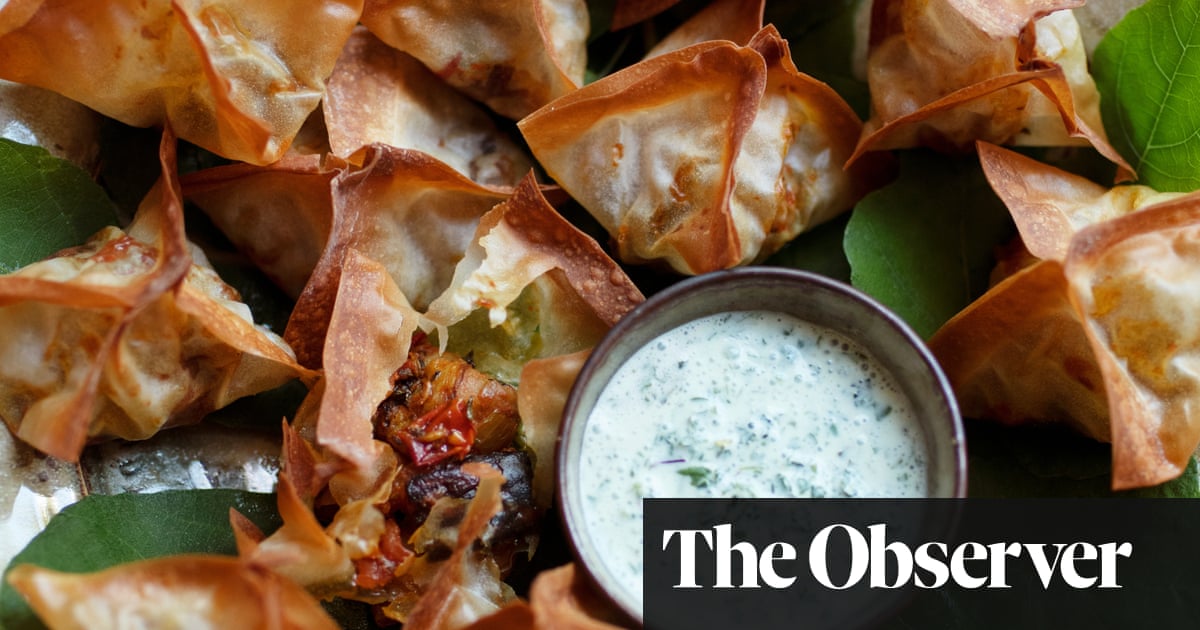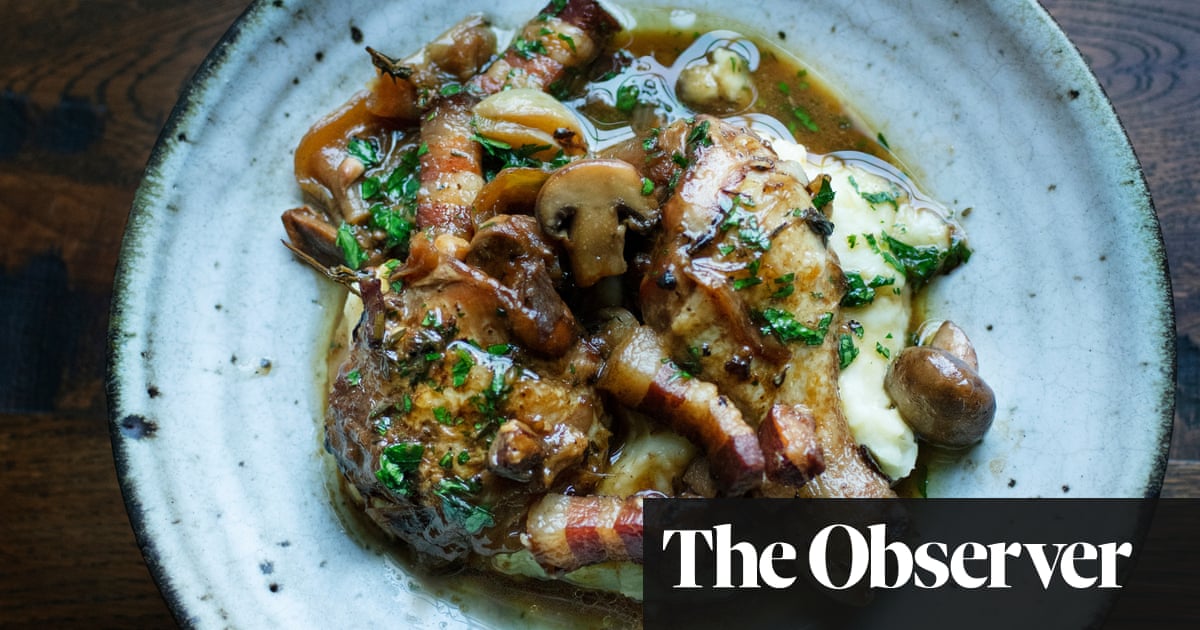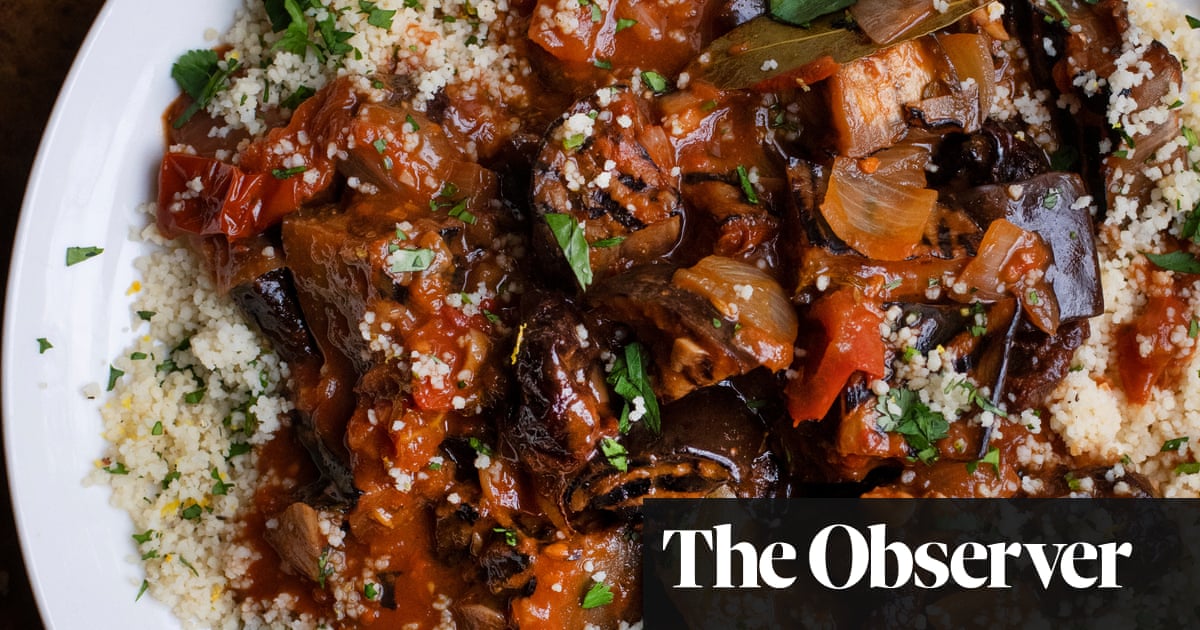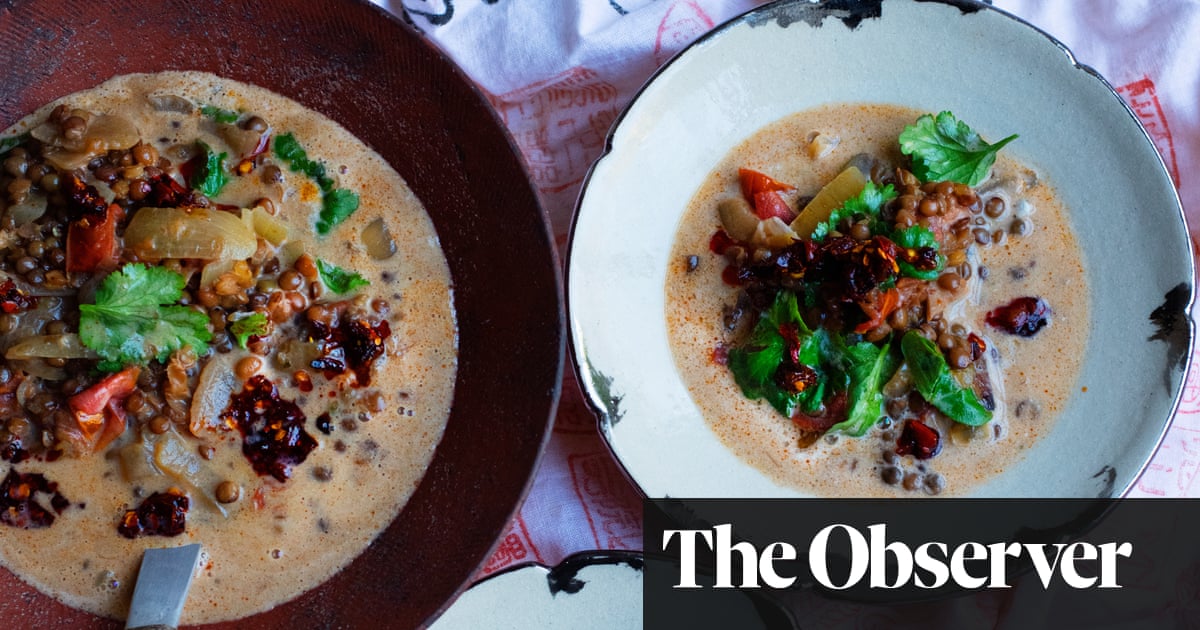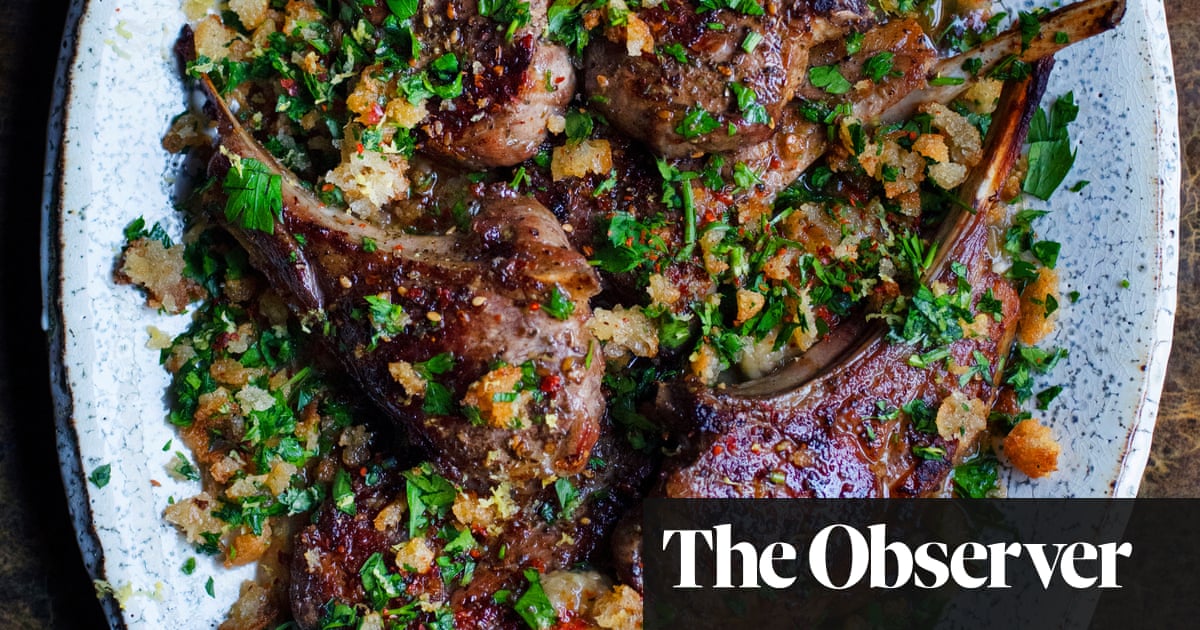
I’m up the rickety ladder, my head deep in the fig tree, its leaves spread like giant’s hands. It is my annual race with the blackbirds to get to the ripest fruit. This year, the fruits are the size of burrata, and just as tender, their jelly-flesh richer and sweeter than I have known since first planting the tree as a sapling 20 years ago. The rest of the garden may be as crisp as pork crackling, but the 2022 heatwave has been good for my ficus and its crop.
It would seem rude to meddle too much with fruit as perfect as this. Most will be eaten as it is, the green and purple baubles piled on an oval dish and brought to the table for all to scoff with abandon. But I stop to snap off some of the smaller leaves, too. I need them to adorn a plate of bloomy white goat’s cheese, but more to the point, to make ice-cream. I have made a pale and milky ice with both fruit and leaves before, but this time I want to use kefir in place of some of the milk, to make an ice that is less sweet and with more of the spirit of the tree. Sweetness is something that can dilute the true flavour of any ice, but especially the more elusive apricot or fig.
What gives fig-leaf ices their subtle and extraordinary flavour is the milky sap held in the leaves. In small quantities it is as green and perfumed as freshly mown grass, but in large quantities it exudes bitterness, which is why you need to remove the milky stems. It is this sap that will make your custard curdle, but it always does a bit, so ignore the grainy mess and carry on, blending it to a smooth green paste. The finished ice is mercifully unsweet, but taste it as it churns, adding a little icing sugar to taste.
This is also the week of the year in which I make a batch of damson gin. A sweet, deep ruby liquor to see me through the cold winter nights. This time, a few aromatics went in with the fruit, gin and sugar. A sprinkling of green cardamom pods and coriander seeds added a little more warmth to my favourite winter tipple.
Fig leaf and kefir milk ice
I have been making versions of this ice-cream ever since my fig tree came of age, but this year’s, with the addition of kefir, is new and seems an improvement on my previous versions. It is a good idea not to include any of the thick stems, as the milky sap they contain can make the milk curdle. (You may see a little of this when you add the leaves to your milk, but worry not, it disappears in the blender.) It is important to use very fresh milk. Serves 6
fig leaves 50g, with no stalks
full-cream milk 500ml
egg yolks 6
caster sugar 100g
kefir 300ml
icing sugar 5 tbsp (optional)
Wash the fig leaves (don’t skip this, even if they look clean), then finely shred them using a large knife. Pour the milk into a small saucepan and bring the milk almost to the boil. As bubbles start to rise around the edges, add the shredded fig leaves, then set aside for a good hour or two, preferably overnight.
Transfer the milk and leaves to a blender and process until smooth. There will be some fibres present, so push the mixture through a sieve to remove them. Using a balloon whisk or electric mixer, beat together the egg yolks and sugar until thick and creamy.
Return the milk mixture to a clean saucepan and bring almost to the boil. As it starts to bubble, pour into the eggs and sugar and mix until smooth. Stir in the kefir, then chill thoroughly. Pour the custard into an ice-cream machine and churn until almost frozen. As you go, add some or all of the icing sugar to taste.
If you don’t have a machine, then pour into a plastic freezer box, cover tightly and freeze for two hours. Remove from the freezer, stir the edges of the fig-leaf mixture into the liquid middle – they will be lightly frozen – then cover and return to the freezer. Repeat this stirring and freezing process a further three or four times, until frozen. What the stirring does is to ensure a creamier texture, less than is possible with a machine, but a notch above simply leaving the mixture to freeze.
Aromatic damson gin
Pricking the diminutive fruits with a needle is less fiddly than it sounds; a job to do on a damp Saturday afternoon. The jars, filled with sugar, gin and fruit, need turning regularly until the sugar has dissolved, then tucking away in a dark corner for a couple of months while the magic gets to work. There is no point in using your best artisan-made gin for this – save that for your G&T. Any commercial brand is fine. Makes about 2 litres
damsons 900g, washed and pricked all over
sugar 750g
gin around 1.5 litres
green cardamom pods 15
coriander seeds 20
Wipe the damsons, discarding any that are squashy or bruised. Prick the fruit all over with a needle. Alternatively, freeze the fruit in a sealable plastic bag, then bash them briefly with a heavy object until they are cracked. Don’t overwork them, you simply need to crack their skins.
Using a heavy weight such as the end of a rolling pin or a pestle, crack open the cardamom pods, but leave the seeds intact. Drop the pods among the coriander seeds and mix with the damsons and the sugar.
Put the sugar, fruit and aromatics into a large Kilner jar or two smaller ones, then pour in the gin. Seal the top and store in a cool, dark place for six weeks.
Turn the jars over from time to time – I do it every few days – or give them a respectful shake. When ready, filter the gin through a sieve over a funnel into the reserved gin bottles. Store in the cool, where it will keep for several months.




